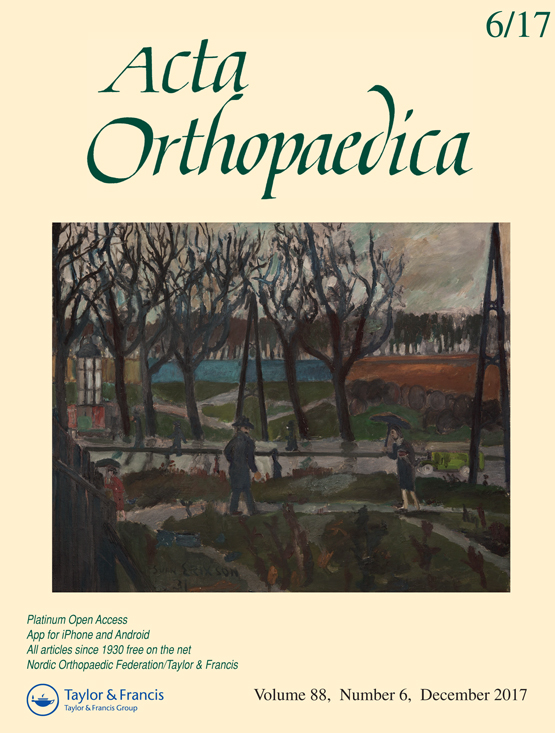Excellent long-term results of the Müller acetabular reinforcement ring in primary cup revision
DOI:
https://doi.org/10.1080/17453674.2017.1361137Abstract
Background and purpose — The original Müller acetabular reinforcement ring (ARR) was developed to be used for acetabular revisions with small cavitary and/or segmental defects or poor acetabular bone quality. Long-term data for this device are scarce. We therefore investigated long-term survival and radiographic outcome for revision total hip arthroplasty using the ARR. Patients and methods — Between October 1984 and December 2005, 259 primary acetabular revisions using an ARR were performed in 245 patients (259 hips). The mean follow-up time was 10 (0–27) years; 8 hips were lost to follow-up. The cumulative incidence for revision was calculated using a competing risk model. Radiographic assessment was performed for 90 hips with minimum 10 years’ follow-up. It included evaluation of osteolysis, migration and loosening. Results — 16 ARRs were re-revised: 8 for aseptic loosening, 6 for infection, 1 for suspected infection, and 1 due to malpositioning of the cup. The cumulative re-revision rate for aseptic loosening of the ARR at 20 years was 3.7% (95% CI 1.7–6.8%). Assuming all patients lost to follow-up were revised for aseptic loosening, the re-revision rate at 20 years was 6.9% (95% CI 4.1–11%). The overall re-revision rate of the ARR for any reason at 20 years was 7.0% (95% CI 4.1–11%). 21 (23%) of the 90 radiographically examined ARR had radiographic changes: 12 showed isolated signs of osteolysis but were not loose; 9 were determined loose on follow-up, of which 5 were revised. Interpretation — Our data suggest that the long-term survival and radiographic results of the ARR in primary acetabular revision are excellent.Downloads
Download data is not yet available.
Downloads
Published
2017-11-02
How to Cite
Mueller Greber, P., Manzoni, I., Ochsner, P. E., Ilchmann, T., Zwicky, L., & Clauss, M. (2017). Excellent long-term results of the Müller acetabular reinforcement ring in primary cup revision. Acta Orthopaedica, 88(6), 619–626. https://doi.org/10.1080/17453674.2017.1361137
Issue
Section
Articles
License

This work is licensed under a Creative Commons Attribution-NonCommercial 3.0 Unported License.
Acta Orthopaedica (Scandinavica) content is available freely online as from volume 1, 1930. The journal owner owns the copyright for all material published until volume 80, 2009. As of June 2009, the journal has however been published fully Open Access, meaning the authors retain copyright to their work. As of June 2009, articles have been published under CC-BY-NC or CC-BY licenses, unless otherwise specified.







